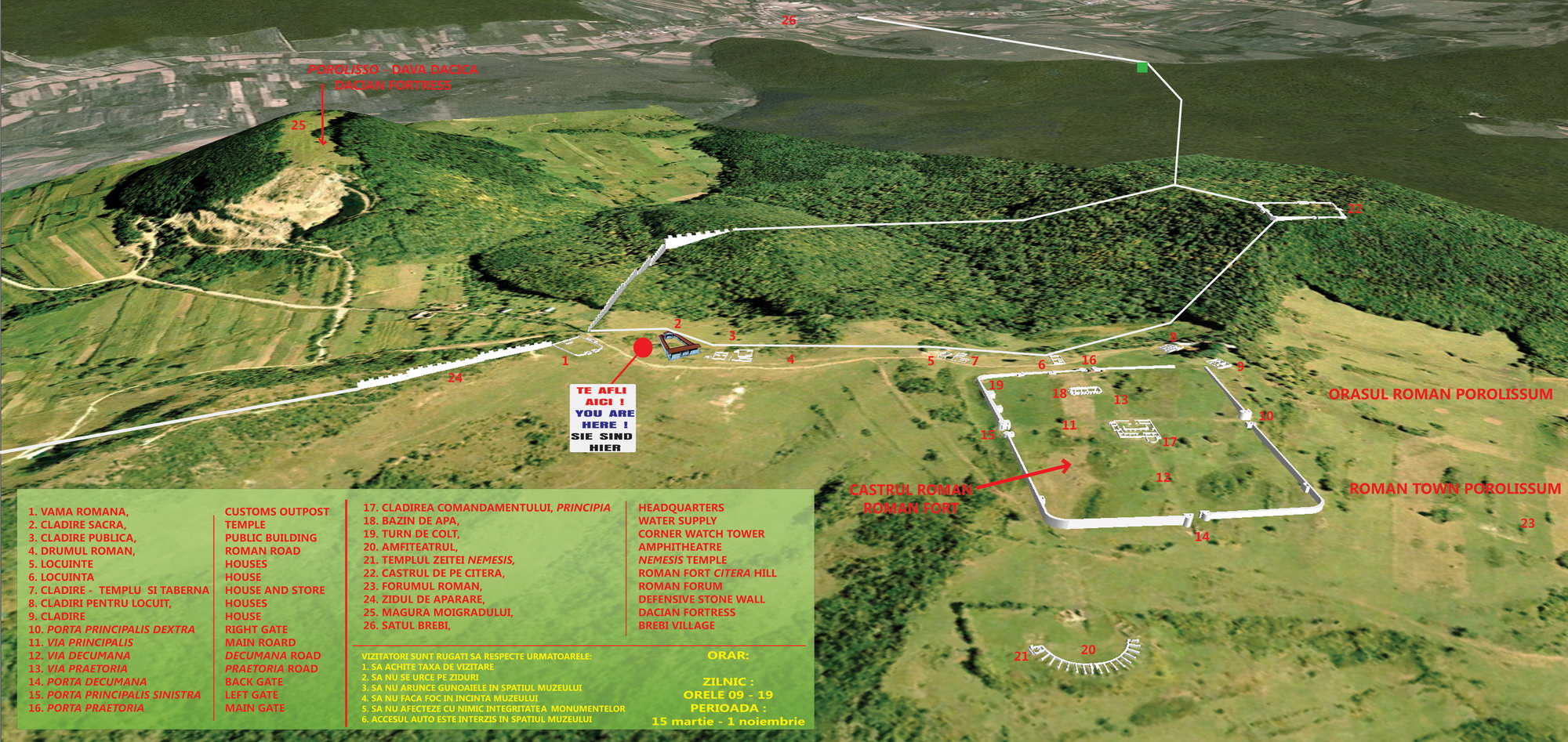History
The archaeological site of Porolissum contains an important prehistorically center (Neolithic, Bronze, Hallstatt) and Dacian, that are located on Măgura Moigradului (approx. 15 ha), as well as Roman forts, earth banks (on about 8 km in length), ditches and defense walls, two Roman forts, civil settlement of the large fort – military vicus, the urban civil settlement – the Roman city Porolissum, Roman necropolis, the Roman Amphitheatre, two lines of aqueducts on pillars, of about 300 m. All these elements of Roman civilization formed a military and urban center that was the capital of Dacia Porolissensis, organized by Emperor Hadrian, perhaps in 123 A.D. For the Roman city of Porolissum it is known the path of the outside wall, the location of the main entrance gates to the city, the main access roads – the stone roads on which there can be seen even today the markings of the Roman carriages. It was identified and partially researched the Roman city of Porolissum here in the middle of this area of over 30 hectares of land. This entire huge and important archaeological landmark is placed in the main pass of the valley from North-West of Dacia, pass which goes through the last branch of the Apuseni Mountains, where Meseş Mountain lays down. This pass is known in the history as Poarta Meseşană.

Porolissum was archaeologically identified by the end of the 19th century, but the first research was performed at the beginning of the 20th century and was continued in the interwar period.
The scientific research identified the main components of the site by revealing and partially researching the Dacian settlement Măgura Moigradului, the large fort (300 x 240m) on Pomăt Hill, the small fort (101x90m) from Citera Hill, the Amphitheatre, the sanctuary terrace, the Roman defensive system, banks, ditches of about 8 km long, and defense walls. The double bank – subsequently identified in line with a double aqueduct (civil and military) was built on pillars of 6x6m and respectively 3x3m, pillars that were made in full brickwork of stone bond in mortar and which had about 3-4 floors (approximately 30-35 m height).
\r\n
- Prev
- Next >>



.JPG)
.JPG)
.JPG)